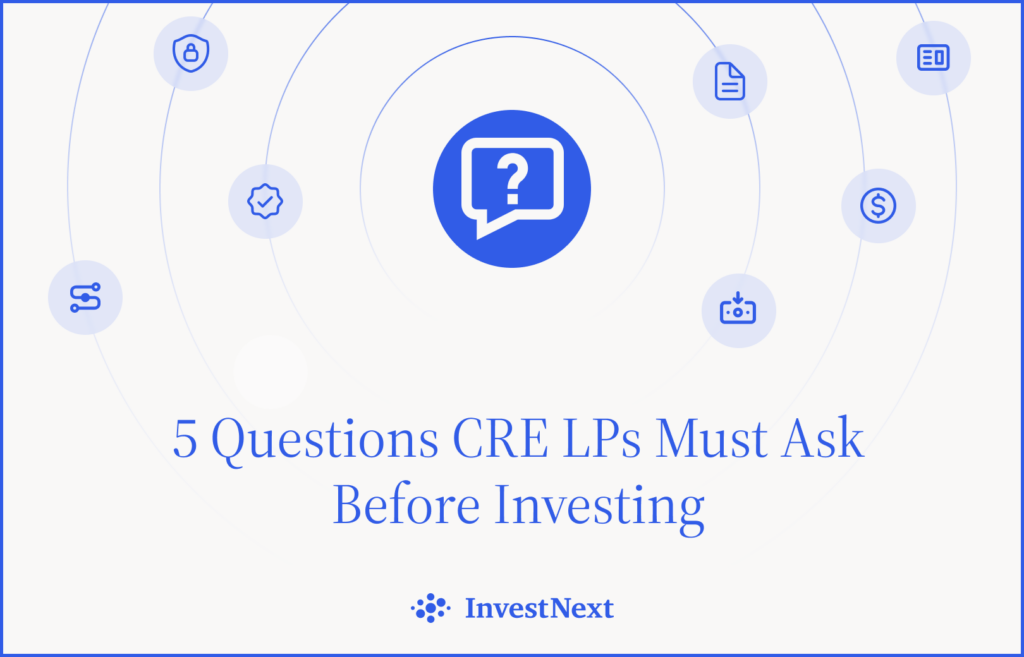Understanding the distinction between General Partners (GP) and Limited Partners (LP) is critical for anyone involved in the realm of real estate investment. This differentiation not only influences operational dynamics but also impacts the risk and reward balance for the parties involved. With the rise of GP vs LP real estate investment structures, grasping the nuances of each role and its implications for investment outcomes has never been more essential. At its core, the GP vs LP framework dictates how responsibility, liability, and profit are distributed among those who manage and those who fund real estate ventures, making a profound difference in the strategic approach to property investment.
This article aims to evaluate the complexities of the GP and LP roles, highlighting the difference between LP and GP, and examining their unique contributions to the real estate investment process. We’ll look into the ownership and equity structure that distinguishes GP/LP structure real estate, explore the financial compensation and incentives for GP vs LP, and identify the legal and liability aspects that differentiate the two. By providing a clearer understanding of what is GP and LP in real estate, stakeholders can make more informed decisions tailored to their investment goals and risk tolerance, ultimately guiding the successful execution of real estate projects.
Roles and Responsibilities of GP vs. LP
General Partners
General Partners (GPs) are actively involved in the management and decision-making processes of real estate investments. They are typically real estate experts who handle the sourcing and underwriting of deals, conducting due diligence, securing financing, and guaranteeing debt. GPs are also responsible for the day-to-day operations, including property management, asset management, and eventually, the disposition of the property.
Limited Partners
Limited Partners (LPs), on the other hand, are passive investors who provide the necessary capital for investments but do not engage in the day-to-day management of the real estate projects. Their involvement is primarily financial, contributing either debt or equity to the deals. LPs rely on the expertise of GPs to manage the investments effectively and are not required to offer personal guarantees against loans.
Responsibilities Before Deal Closure
Before a deal is closed, GPs are tasked with identifying potential properties, engaging with brokers and agents, and performing extensive market research to ensure the viability of the investment. They also handle the legal aspects, such as drafting and negotiating contracts and securing the necessary approvals and financing. This phase is critical as it sets the foundation for the success of the investment.
GPs have additional obligations to their LPs. Once GPs have identified their target assets, completed extensive market research, produced an investment plan, and finalized legal and financial arragements, they must clearly communicate the asset’s potential and expected investment return. This transparent approach is the beginning of a trust-based relationship between the GP and LP and empowers the LP to invest with confidence.
GPs can cultivate LP trust and promote transparency through accessible investor portals and deal rooms. These tools enable GPs to present the full scope of the investment asset with images, video, project plans, and expected investment performance and investor return. Enabling LPs to determine whether the deal aligns with their investment strategy, meets their investment requirements, and easily commit to and fund the investment.
Responsibilities After Deal Closure
After closing a syndication deal, the responsibilities of GPs do not cease. They must execute the business plan, manage the property effectively, and ensure a strong return on investment (ROI) for all stakeholders. This includes managing renovations, overseeing property management companies, and adjusting strategies in response to market changes to maximize profits.
GPs should also continue building on the foundation of their trust-based relationship with their LPs by providing proactive project updates and delivering anytime access to investment performance. GPs must also provide investor statements and tax documents to enable LPs to fulfill their tax obligations and reap the tax benefits of investing in real estate. Depending on the details outlined in the operating agreement, GPs are also required to send distributions to LPs throughout the lifecycle of the project. The ultimate goal is to deliver on the promises made to LPs and ensure their capital is preserved and grows.
Ownership and Equity Structure
Contribution of GP and LP
The General Partner (GP) actively manages the investment, handling all operational responsibilities from identifying potential deals to managing the property post-acquisition. Limited Partners (LPs), however, contribute primarily financially and take a passive role, relying on the GP’s expertise to manage the investment. The GP typically assumes more risk, often providing personal guarantees for financing, whereas the LP’s risk is limited to their equity investment.
Equity Split Examples
Ownership in the partnership is defined by the Limited Partnership Agreement, where equity contributions determine each partner’s stake. For instance, in a typical structure, the LP might contribute a significant majority of the equity, around 80-90%, with the GP contributing the remainder. The equity split affects subsequent profit sharing, as demonstrated in various real estate deals, where after meeting certain return thresholds, profits are distributed according to predefined percentages.
Waterfall Structure
Waterfall structures outline the distribution of cash flows and profits between GPs and LPs based on achievement of specified financial targets. Initially, all returns up to a certain percentage are distributed to LPs; only after these hurdles are met do GPs receive their share. This incentivizes GPs to exceed performance targets to reach higher tiers of profit distribution. The complexity of these structures can vary significantly, often incorporating provisions like catch-ups and preferred returns, which dictate the sequence and allocation of payouts.
Financial Compensation and Incentives
Carried Interest
Carried interest, often referred to as “carry,” represents a share of the profits that general partners (GPs) receive as compensation for their investment management efforts. This form of compensation allows GPs to benefit from the long-term capital gains of the real estate venture, aligning their interests with those of the limited partners (LPs) by incentivizing the successful management and growth of the investment. The allocation of carried interest is contingent upon the property being sold at a profit that surpasses the agreed-upon returns to the investors, thereby ensuring that GPs are rewarded for their risk-taking and efforts towards the project’s success.
Management Fees
In addition to carried interest, GPs earn compensation through various management fees, which are charged to cover the operational expenses incurred in managing the investment. These fees can include an acquisition fee, asset management fee, capital events fee, project management fee, and disposition fee. The range of these fees varies but generally encompasses a percentage of the purchase price, gross annual revenue, loan amount, construction costs, or sales price. Such fees compensate GPs for their role in overseeing and managing the deal on behalf of the investors, ensuring that the investment is handled efficiently and effectively.
Performance Bonuses
Performance bonuses, or “promotes,” are additional incentives given to GPs for exceeding return expectations on the investment. This mechanism serves as a further motivator for GPs to manage the project thoughtfully, control costs, and align interests throughout the lifecycle of the deal. Promotes are essentially bonus payments that become due when the investment performs beyond the predefined targets, offering GPs a greater share of the profits as a reward for exceptional management and performance.
These financial compensation structures, including carried interest, management fees, and performance bonuses, are designed to align the interests of GPs and LPs, ensuring that both parties benefit from the success of the real estate venture. Through these incentives, GPs are motivated to maximize returns, thereby fostering a partnership that is beneficial for all involved.
Legal and Liability Aspects
Unlimited Liability for GP
General Partners (GPs) are inherently exposed to unlimited personal liability in the management of real estate investments. This liability extends to all business debts, poor investments, and legal issues that may arise. If the business encounters financial difficulties, GPs are personally responsible for covering these obligations, potentially putting their personal assets at risk. This level of accountability underscores the significant risk GPs accept, aligning their interests closely with the success of the venture.
Limited Liability for LP
In contrast, Limited Partners (LPs) enjoy a more protected role, where their liability is confined to the amount of their initial investment. This structure shields their personal assets from being targeted to settle business debts or legal judgments, making this an attractive option for those who prefer to invest without engaging in daily management or exposing themselves to extensive financial risk. This limited liability is crucial for LPs, as it allows them to invest in real estate with reduced personal financial exposure.
Legal Structures Used
Various legal structures are employed to manage and mitigate the risks associated with real estate partnerships. Limited Liability Partnerships (LLPs) and Limited Liability Companies (LLCs) are common formats. LLPs provide protection where each partner is responsible only for their own actions and not for the collective liabilities of the partnership. LLCs offer a corporate-like shield for members, protecting individual partners from direct liability for the company’s debts. These structures are designed to provide a balance of control and protection, ensuring that both GPs and LPs can operate within a framework that aligns with their risk tolerance and management capabilities.
Conclusion
Throughout this exploration of the roles and responsibilities within the real estate investment framework, the nuanced dynamic between General Partners (GP) and Limited Partners (LP) has been thoroughly dissected to demonstrate their pivotal roles in shaping investment outcomes. The discussion has made clear the distinction between GPs, who manage and oversee the daily operations and bear the majority of the risks, and LPs, who provide essential capital while benefiting from a more protected investment stance. By understanding these positions, investors are better equipped to make decisions aligned with their financial goals and risk tolerance, ultimately contributing to the effective execution and success of real estate projects.
The implications of these roles on legal liabilities, financial compensation, and equity structures further elucidate how GPs and LPs not only share in the profits but also in the vision of real estate investments’ potential to yield significant returns. As the real estate market continues to evolve, so too will the strategies and partnerships within these investment frameworks. Embracing the insights and strategies outlined herein will undoubtedly pave the way for more informed, strategic, and ultimately successful real estate investments.
FAQs
1. How do General Partners (GPs) differ from Limited Partners (LPs) in real estate?
In real estate investment, the distinction between General Partners (GPs) and Limited Partners (LPs) lies in their roles and responsibilities. Limited Partners are investors seeking opportunities in real estate but lack the resources to identify and acquire properties. General Partners, on the other hand, have the expertise in locating, purchasing, and managing real estate properties. This partnership combines financial resources with real estate acumen for mutual benefit.
2. What separates the investment approaches of GPs and LPs?
The primary difference in investment approaches between GPs and LPs is their level of involvement and responsibility. Limited Partners (LPs) contribute financially to the investment, while General Partners (GPs) take an active role in managing the investment. This collaborative effort aims to maximize returns for both parties, aligning their interests towards the success of the fund.
3. Is it more advantageous to be a General Partner (GP) or a Limited Partner (LP)?
The advantage of being a General Partner (GP) or a Limited Partner (LP) in a private equity fund varies depending on market conditions. General Partners may secure better terms and capital commitment based on their track record and during bullish market periods. Conversely, Limited Partners might find more favorable terms during bearish market conditions or when the market outlook is less optimistic.
4. Can you explain the GP and LP structure in real estate investment?
In a real estate investment, both General Partners (GPs) and Limited Partners (LPs) play crucial roles for a deal to succeed. General Partners undertake the majority of the operational tasks, including market research and property management. Meanwhile, Limited Partners provide the necessary capital for the investment and have limited liability and involvement in decision-making processes. This structure allows for a division of labor and risk that benefits both parties.



